Abstract
With the increasing number of subjects with coarctation of the aorta having operations, its natural history becomes more difficult to determine. The expectation of life has been calculated by two quite independent methods: (1) from 304 reported necropsies, and (2) from 22 deaths among 161 subjects followed for 716 patient-years. These were mostly patients rather than unselected school-children, but many were quite free from symptoms and were sent only because a murmur was heard on examination.
Knowing how long they had been under observation, mortality rates could be calculated for each decade. They rise gradually but not very regularly, from 1.6 per cent in the first two decades to 6.7 per cent per annum in the sixth and later decades.
The two methods give results in close agreement, closer than could be expected considering the relatively small numbers of patients and patient-years. The percentages of deaths at the end of each decade found by the two methods never differ by more than ±4 per cent and are often much closer. Of those surviving the serious hazards of the first one or two years, 25 per cent die before they reach 20, 50 per cent by 32, 75 per cent by 46, and 90 per cent by 58 years.
The arithmetical mean of the ages of death is 34 years instead of 71 years as normally. These means, however, hide a very wide range, with standard deviations of at least ±15 per cent. For coarctation the median is 31 years and the mode is widely spread through the second to fifth decades rather than closely clustered round a point.
This poor outlook makes an operative mortality in the region of 5 per cent a small price to pay for the greatly increased security afterwards. We do not yet know how much the risk of bacterial endocarditis or of intracranial haemorrhage will be reduced in the long run because there may be bicuspid aortic valves or intracranial berry aneurysms.
The exact incidence of subacute bacterial endocarditis is uncertain, somewhere between 0.6 (from necropsy series) and 1.3 per cent per annum in clinical series. The range was similar for persistent ductus arteriosus, but paradoxically 1.5 for the necropsy series and 0.5 for the clinical series. Clearly the incidence is high in all the four malformations shown in Table 5, about 0.9±0.4 per cent per annum.
Full text
PDF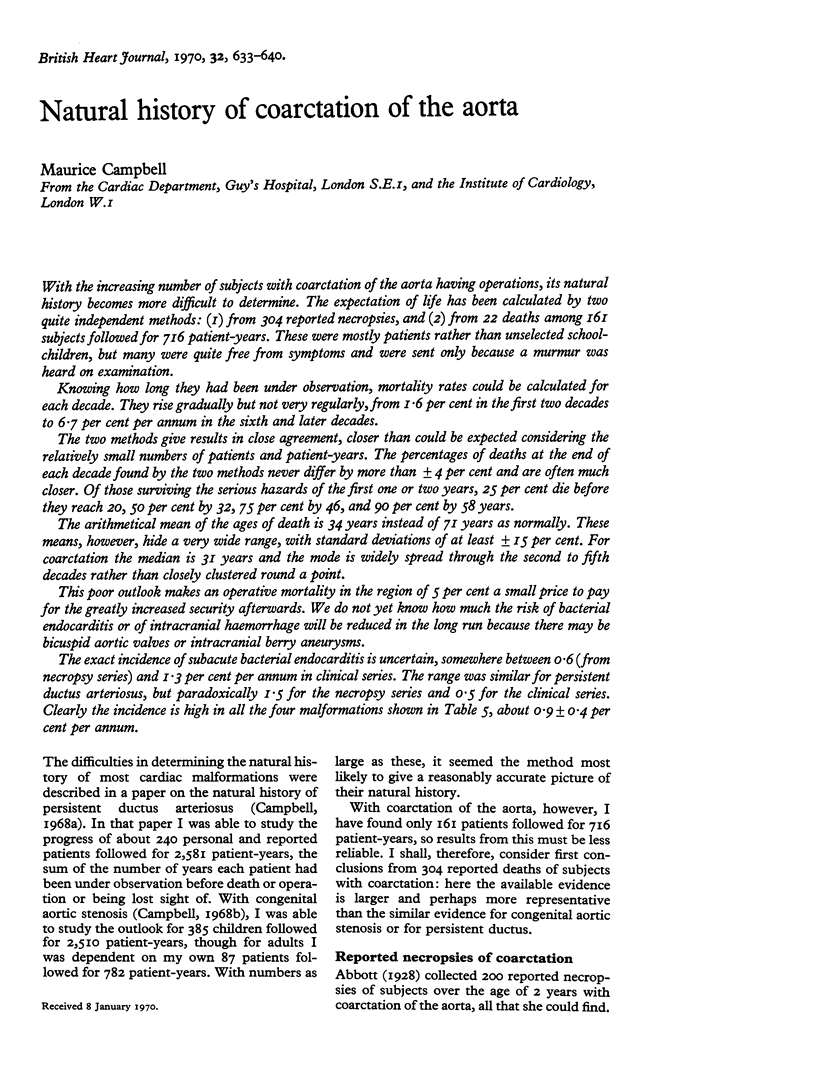
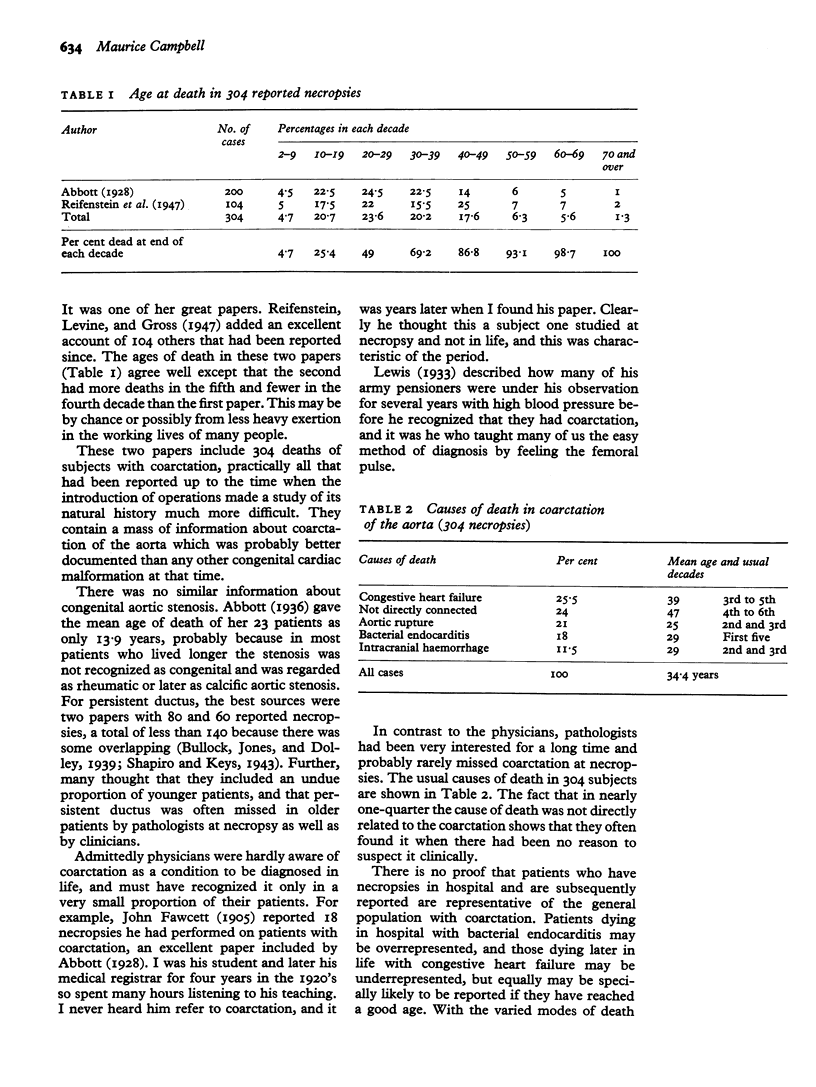

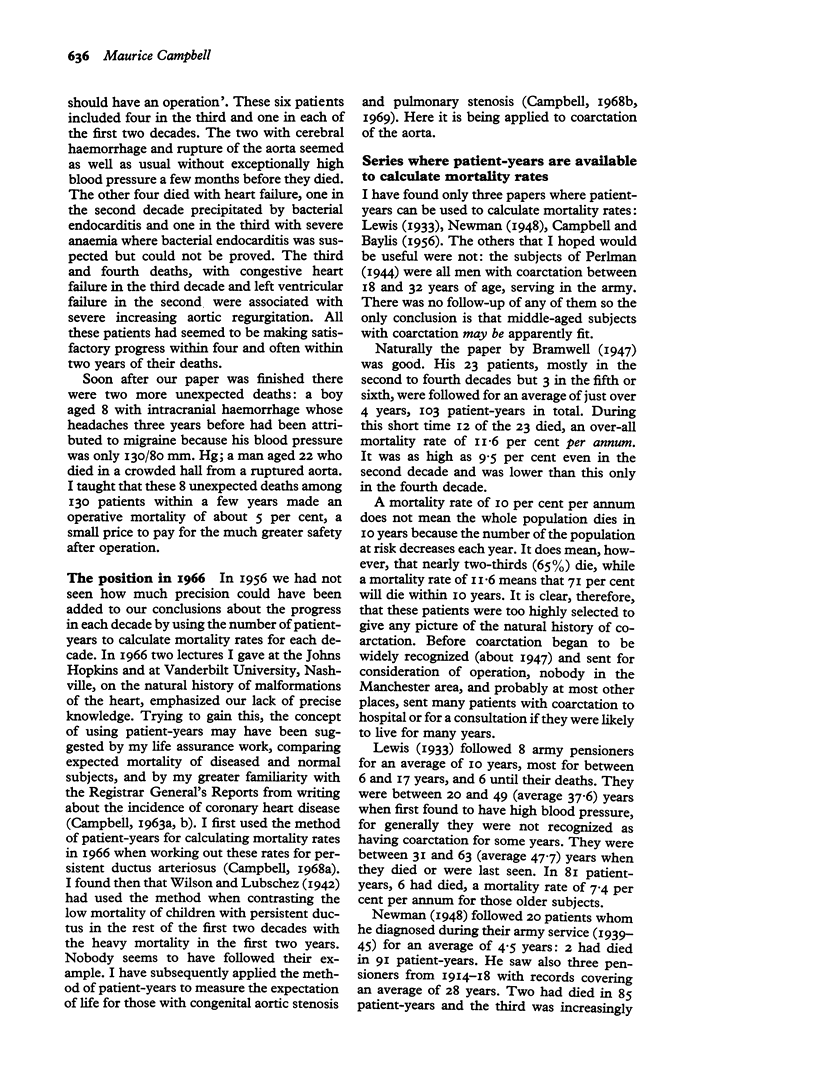
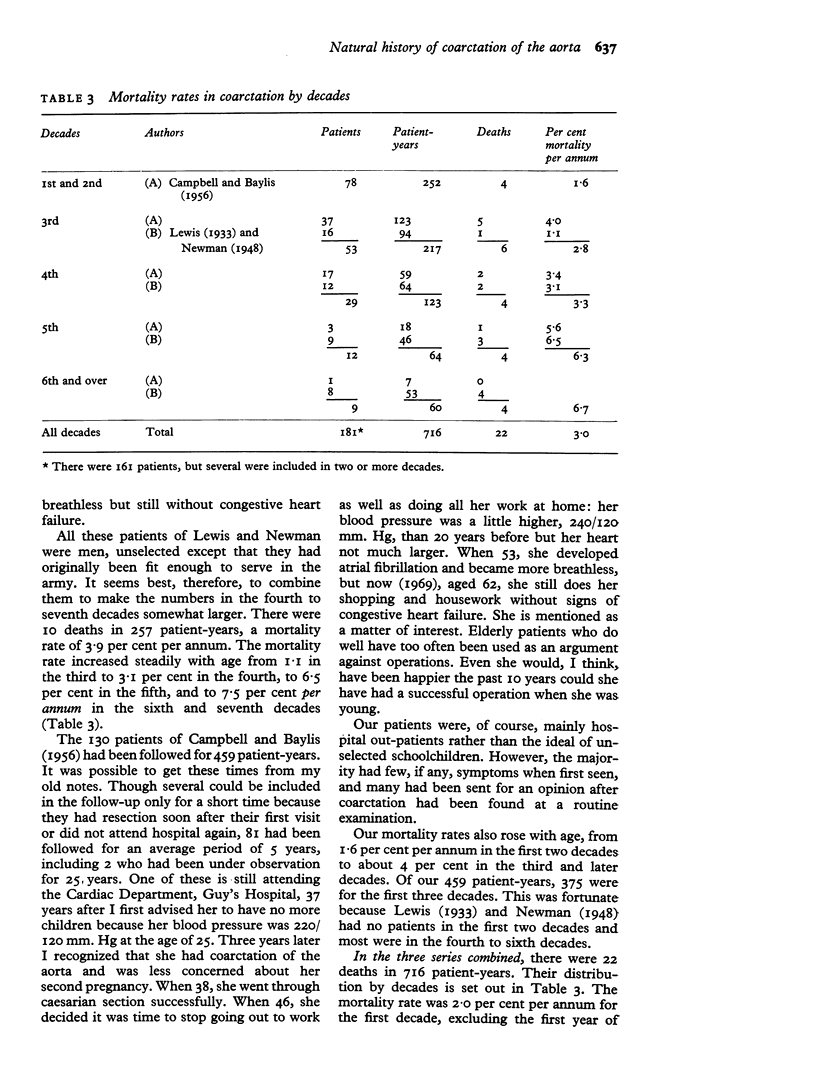
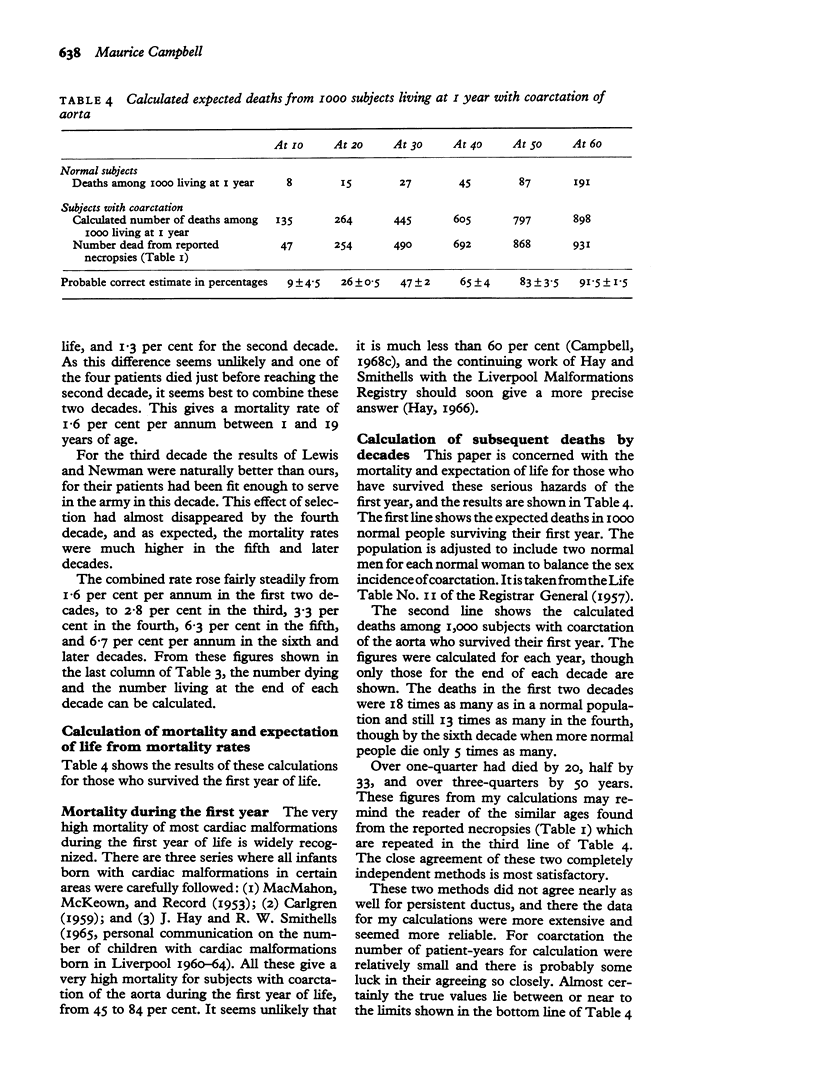
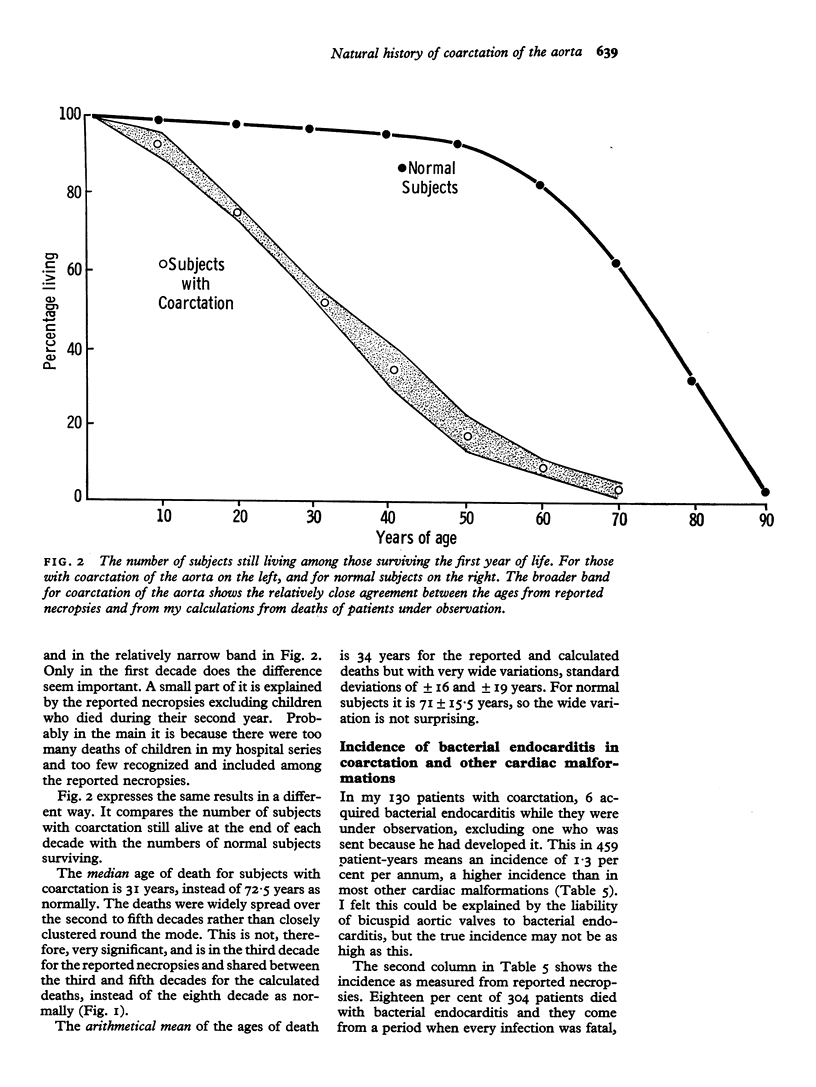
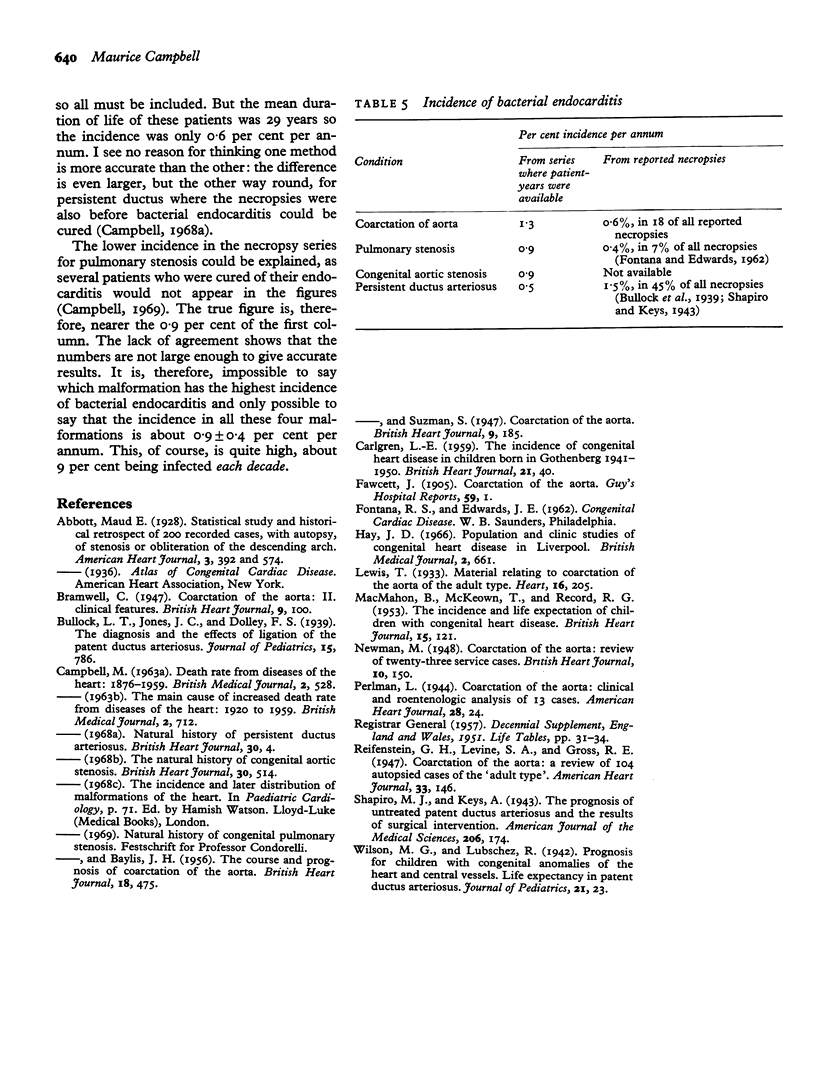
Selected References
These references are in PubMed. This may not be the complete list of references from this article.
- CAMPBELL M. DEATH RATE FROM DISEASES OF THE HEART: 1876 TO 1959. Br Med J. 1963 Aug 31;2(5356):528–535. doi: 10.1136/bmj.2.5356.528. [DOI] [PMC free article] [PubMed] [Google Scholar]
- MACMAHON B., MCKEOWN T., RECORD R. G. The incidence and life expectation of children with congenital heart disease. Br Heart J. 1953 Apr;15(2):121–129. doi: 10.1136/hrt.15.2.121. [DOI] [PMC free article] [PubMed] [Google Scholar]
- Newman M. COARCTATION OF THE AORTA REVIEW OF TWENTY-THREE SERVICE CASES. Br Heart J. 1948 Jul;10(3):150–157. doi: 10.1136/hrt.10.3.150. [DOI] [PMC free article] [PubMed] [Google Scholar]


